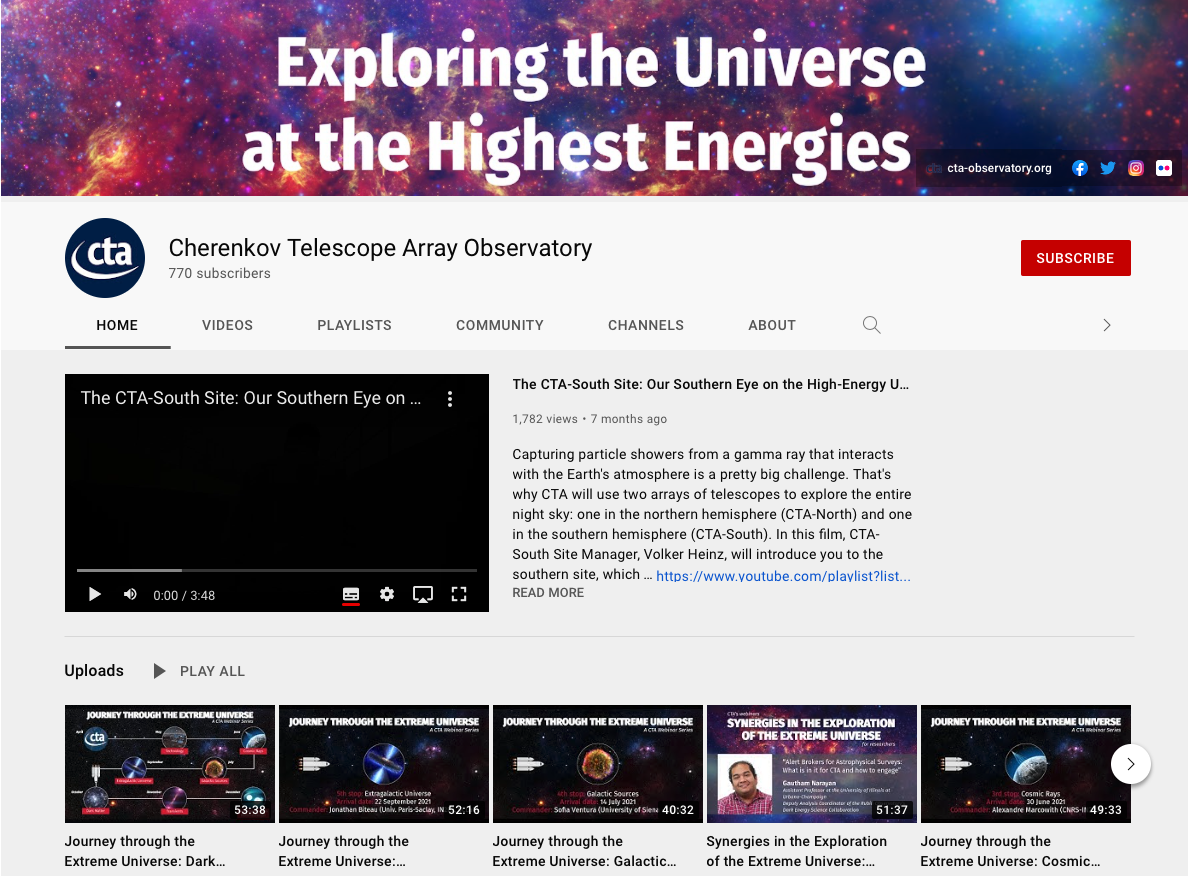CTA-Oz Meeting #2 2021
CTA-Oz Meeting #2 2021
This meeting continues the regular series of CTA-Australia meetings looking at Australia's role and engagement in CTA.
The construction of CTA is well underway, and with CTA's 'cost book' and initial 'alpha' array configuration set, the CTAO-ERIC application will reach stage2 with the EU.
Topics to be discussed include: Status of CTA construction, Australian-led MWL initiatives, student projects, and other MWL projects relevant to CTA science.
For some recent highlights please visit the CTA news website and the CTA YouTube Channel
The meeting will be held remotely, although participants are encouraged to gather locally as permitted.
Remote access: Zoom - https://adelaide.zoom.us/j/81631661214?pwd=N1ZGV1hKREZ3eGRZL3pQem80VFhjdz09
Please note that there is no registration fee for this event.
Keynote Speakers
Simon O'Toole
Anais Moller
TBC
Scientific Organising Committee
Gavin Rowell, Uni Adelaide, Australia
Sabrina Einecke, Uni Adelaide, Australia
Local Organising Committee
Gavin Rowell, Uni Adelaide
Sabrina Einecke, Uni Adelaide
Paddy McGee, Uni Adelaide
Talk durations
-
All talks: 20min (18+2)
Dinner - British Hotel, Adelaide (7pm approx)
58 Finniss St., North Adelaide
https://www.britishhotel.com.au/
Map - https://goo.gl/maps/FXJyUysnUxDKEEu99
Menu - https://www.britishhotel.com.au/menu
Adnaan Thakur
Anais Moller
Anthony Brown
Ashley Ruiter
Bruce Dawson
Csaba Balazs
Gary Hill
Gavin Rowell
Gemma Anderson
Ivo Seitenzahl
Jose Bellido
Kirsty Feijen
Luke Barnes
Matt Roth
Miroslav FILIPOVIC
Nick Tothill
Paddy McGee
Peter Marinos
Rami Alsulami
Robert Koenig
Roland Crocker
Ryan Burley
Sabrina Einecke
Shi Dai
Simon Lee
Simon O'Toole
Tiffany Collins
Violet Harvey



